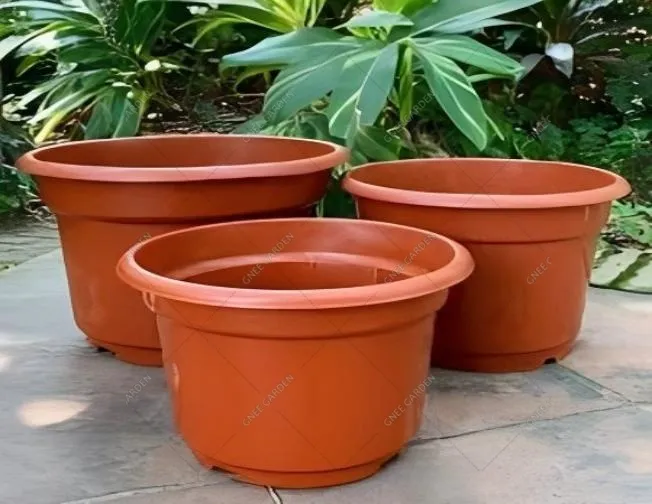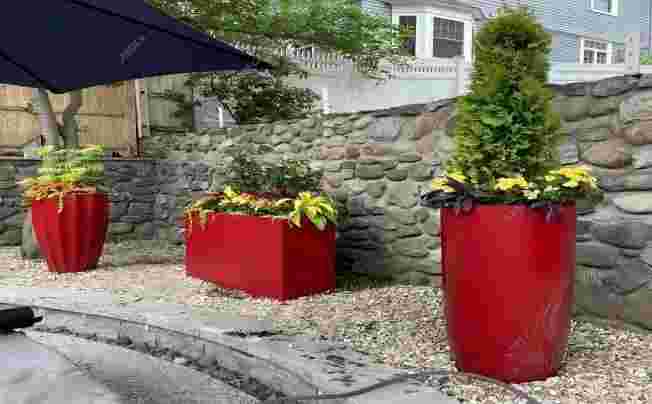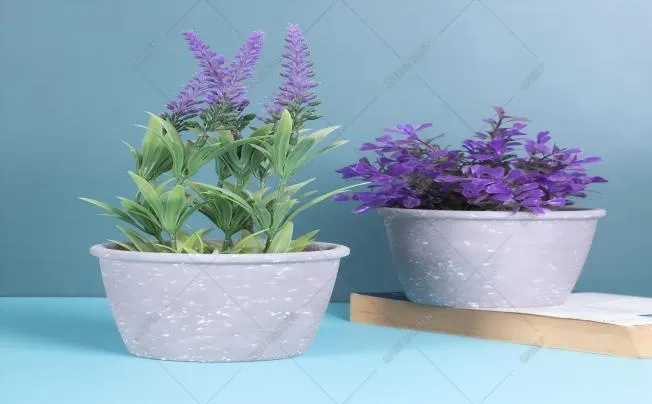Should I Line My Planter With Plastic?
Have you ever been unsure about whether to line the flowerpot with plastic when you joyfully bring home your favourite flowers or fresh vegetable seedlings and get ready to let them settle in? Among gardening lovers, this seemingly straightforward action has sparked a contentious debate.
Benefits of Plastic Lining
1. The benefit of keeping moisture
The plastic liner can significantly minimise water evaporation by acting as a sealed lid for the flower container. Plants naturally flourish in hot summers because the plastic liner keeps the water securely contained, keeps the soil moist for an extended period of time, and allows the roots to drink whenever they want.
2. Root defence
Various pathogens hide in the soil of the flower pot, which can occasionally resemble a tiny world of dirt and grime. They attack the plants' roots whenever they can, leading to deadly diseases like root rot. However, the plastic liner acts as a kind of protective garment for the roots, blocking the pathogens' journey from the soil to the flower pot and enabling the plants' roots to expand freely in a wholesome environment. This layer of protection is even more crucial for weak seedlings, as it can help them get through the sensitive growing stage and establish a strong basis for future luxury.
3. The purpose of cleaning
The plastic liner can entirely separate the soil from the flower pot's wall each time you switch out the pot. Simply gently lift the liner while replacing the pot, and the soil will fall out completely. Cleaning time is significantly reduced and flower maintenance is made simpler and more pleasurable because the flower pot will be as clean as new right away and ready to receive new plants whenever they are ready.

According to plant characteristics
Plants that can withstand drought
Succulents and cacti are examples of drought-tolerant plants that have long adapted to arid conditions. They have very low water requirements because their fleshy stems or leaves can store a lot of water and their root systems have evolved to be very short. For those who enjoy dryness, placing plastic liners in their flower pots is similar to putting on an impermeable jacket. In a hot, humid atmosphere, the roots decay easily, and excess water is hard to drain. Lined flower pots will retain water for a long time, making these drought-tolerant plants uncomfortable even if you just water them excessively once in a while. Therefore, it is best to preserve their flower pots "plain" if you enjoy succulents and cacti.
Flowers that love moisture
Flowers like ferns and green radish are infamous "water jars" in contrast to drought-tolerant plants. They have high needs for air humidity and favour an area with damp soil. Their intense need for water can be satiated and the soil kept moist by the moisturising environment the plastic lining creates. Consider the example of the green radish. Its aerial roots may spread out freely in a flower pot lined with plastic, taking water and nutrients in a crazy way that makes the leaves more glossy and green. Its climbing speed is also greatly quickened, giving the inside a splash of bright green.
stage of seedlings
The seedling's root system is weak and undeveloped. An atmosphere that is stable is crucial during the early phases of growth. At this point, the plastic liner can operate as a "protective cover" to shield the seedlings from outside influences that could harm the root system during watering and moving the flower pots. Moreover, the comparatively enclosed area can offer the seedlings a secure "growth cabin" and lessen the intrusion of outside pathogens. It should be mentioned, nonetheless, that in order to avoid the root system being unable to grow because of limitations, it is imperative to quickly assess whether the liner has to be removed after the seedlings are grown. At the same time, careful watering and adequate ventilation can support the seedlings' growth during upkeep.

Exploring alternatives
Natural materials are on the scene
The fibre from coconut shells, which is used to make coconut coir, has exceptional air permeability, enabling the roots to breathe freely. Additionally, it has a moisturising property that helps to retain the ideal moisture content in the soil. Coconut coir lining is also very easy to make. To stop soil loss and provide a cosy environment for the plant roots, cut the coconut coir into the proper sizes and spread it over the flowerpot's inner wall and bottom. Additionally, hemp fibre is natural, eco-friendly, and rapidly biodegradable. Water penetration and air movement are facilitated by its flexible structure. It can gradually break down into organic nutrients during flower development, nourishing the soil and promoting plant growth. If you want to pursue green planting, this is the greatest option.
Better design for flowerpots
Self-draining flowerpots contain special drainage channels at the side or bottom that allow extra water to drip out on their own. This prevents water buildup and keeps the roots in the right amount of moisture and dryness. Another common option are porous ceramic pots. Numerous "breathing holes" are created by the microscopic pores created during the firing process, which allow air to freely circulate through the soil, enabling the roots to breathe and giving plant growth an unlimited supply of vitality. They work particularly well with plants that have stringent air permeability requirements, such succulents and orchids.

Selected Blogs
-
What customization services are available for metalworking customization?
2024-12-12
-
What Is The Difference Between A Plant Container And A Raised Bed?
2024-04-23
-
Garden Screening & Fence Panels
2024-04-23
-
Gardening pot selection tips
2024-04-17
-
The function and collocation of horticultural fire pot
2024-04-17


